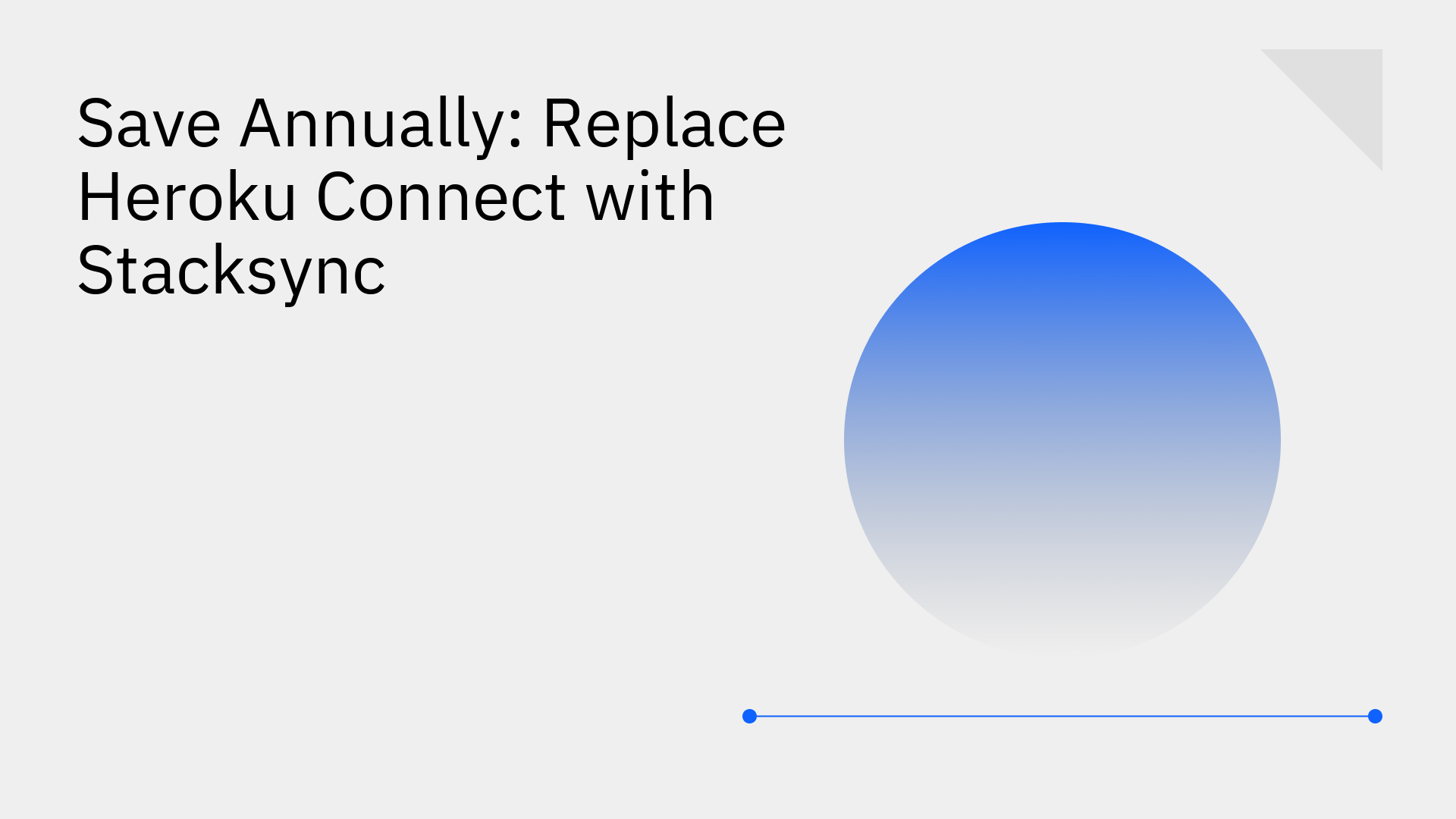
Heroku Connect has served as a functional tool for syncing Salesforce data with Heroku Postgres. However, as businesses scale and the demand for real-time data intensifies, its inherent limitations and pricing model are becoming a significant operational and financial burden.
The core problem is clear: heroku connect cost inefficiency and operational drawbacks like sync latency are holding companies back. It's time for a modern, cost-effective solution. Stacksync offers true real-time synchronization, predictable pricing, and superior scalability, enabling companies to save over $30,000 annually while empowering their engineering teams.
The sticker price of Heroku Connect is just the beginning. Its architecture and pricing model often lead to spiraling costs and significant operational headaches that hinder innovation and drain resources.
Heroku Connect’s pricing is structured around the number of synced data rows [3]. This model directly penalizes data growth. As your business succeeds and your Salesforce data expands, you are forced into progressively more expensive tiers, leading to unpredictable budget spikes.
While Heroku states it won't strictly enforce row limits on paid plans, exceeding your contracted row count triggers contact from their sales team to upgrade your plan [6]. This creates a reactive and stressful budgeting cycle where you're constantly at risk of unexpected cost increases. For a more detailed look at how these pricing structures compare, you can review a comparative analysis of Stacksync, Heroku Connect, and Workato.
Beyond the cost, Heroku Connect's operational limitations present a major challenge for modern applications. The service polls for changes at a minimum interval of 10 minutes, making it fundamentally unsuitable for use cases requiring immediate data consistency [5]. This data latency hinders the development of real-time internal tools, customer-facing applications, and responsive operational workflows.
Furthermore, it lacks the granular control, advanced error handling, and integrated workflow automation capabilities that engineering teams need. These limitations create a constant source of engineering overhead, as teams must build and maintain workarounds to compensate for the platform's shortcomings.
Stacksync was purpose-built to overcome the shortcomings of legacy tools like Heroku Connect. We provide a far superior solution that delivers better performance, greater flexibility, and significant cost savings.
Stacksync is engineered with an event-driven architecture that enables true real-time, bidirectional data synchronization. Instead of waiting 10 minutes, changes are propagated in milliseconds. Our platform is built to scale from day one, capable of handling millions of records without performance degradation or cost penalties. Features like smart API rate limit management and comprehensive support for all standard and custom objects ensure your data flows smoothly and reliably, no matter the volume. Stacksync offers an affordable real-time sync that scales with your business, not against it.
We believe pricing should be transparent, predictable, and aligned with the value you receive. Unlike Heroku Connect, Stacksync’s pricing is not tied to punitive row counts. Our model eliminates surprise bills and allows you to forecast costs accurately. This empowers you to scale your data operations without the fear of financial penalties, a critical factor for any CTO managing a budget. By moving away from inefficient pricing, you can cut cloud costs significantly in 2025 and reinvest those savings into innovation.
The financial benefits of switching from Heroku Connect to Stacksync are substantial. Let's look at a data-driven scenario to illustrate the potential savings.
Scenario: A mid-sized company with 5 million Salesforce records that need to be synchronized with a Postgres database.
As you can see, the savings are not marginal they are transformative. By making the switch, your organization can reclaim over $36,000 in budget annually, freeing up capital for strategic initiatives.
While the financial savings are compelling, the reasons engineering teams choose Stacksync go much deeper. The switch delivers a vastly improved developer experience, enhanced system reliability, and greater operational control.
Stacksync is built for engineers who value efficiency and reliability. Our platform includes advanced features that solve common integration frustrations:
These features eliminate the "dirty API plumbing" that consumes valuable engineering cycles, allowing your team to focus on building competitive advantages. If Heroku costs are draining your CTO's budget, the operational benefits provide an even stronger case for change.
Migrating from Heroku Connect to Stacksync is a straightforward process designed to minimize disruption and engineering effort. Here’s a high-level overview of the steps:
Heroku Connect’s outdated architecture and row-based pricing model are a clear source of heroku connect cost inefficiency. It's a tool that penalizes growth and fails to meet the demands of modern, data-driven operations.
Stacksync provides a faster, more scalable, and more reliable solution for a fraction of the cost. With proven annual savings of $30,000 or more, a superior developer experience, and true real-time performance, the choice is clear. Stop letting an inefficient tool drain your budget and hold back your team.
Ready to see the difference for yourself? Start your 14-day free trial or book a demo with one of our solutions architects today.